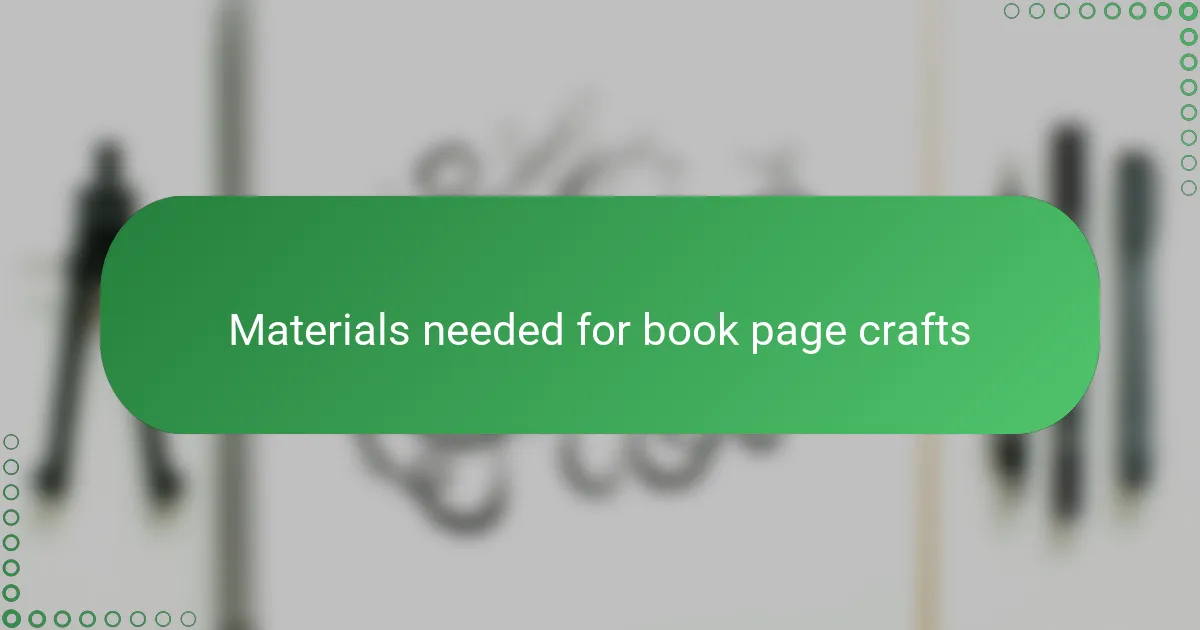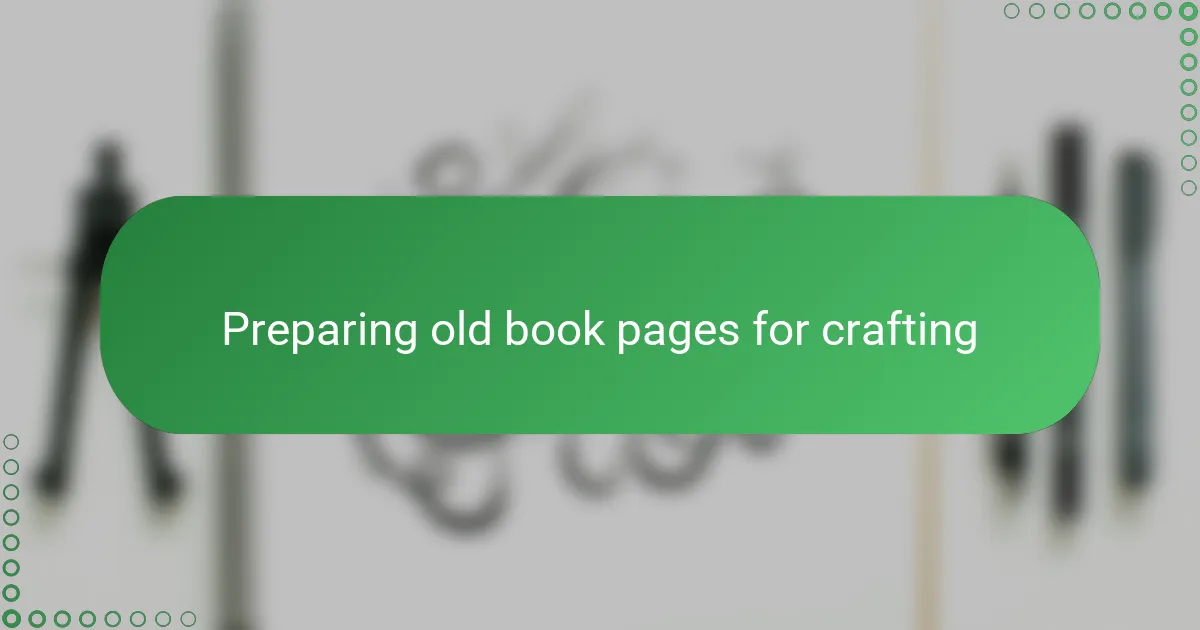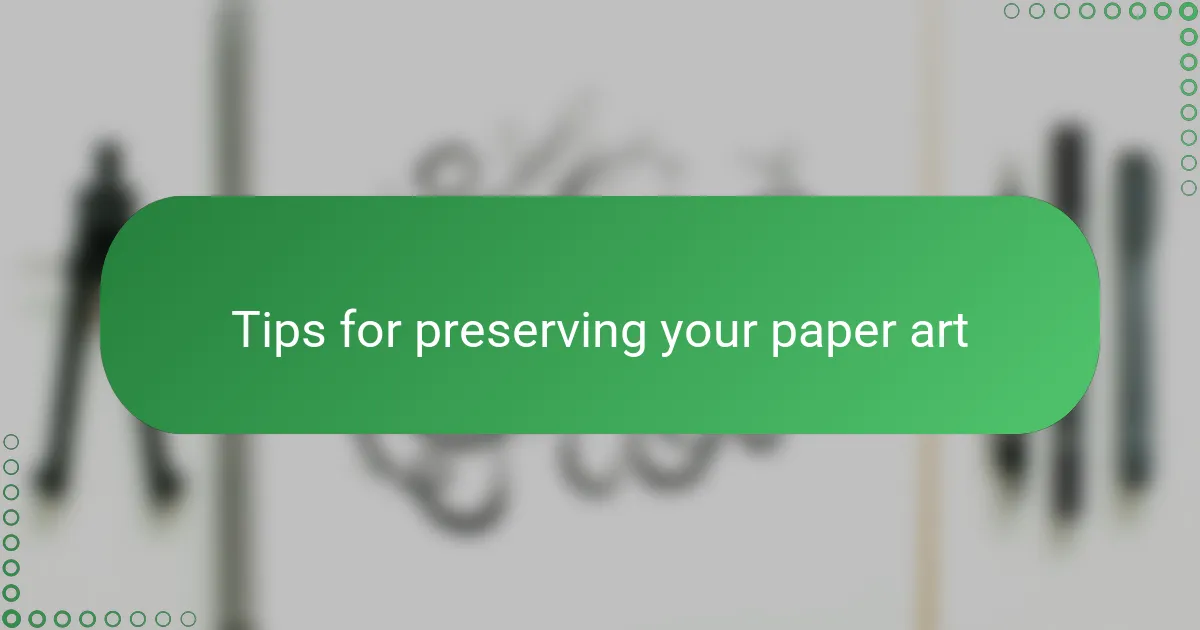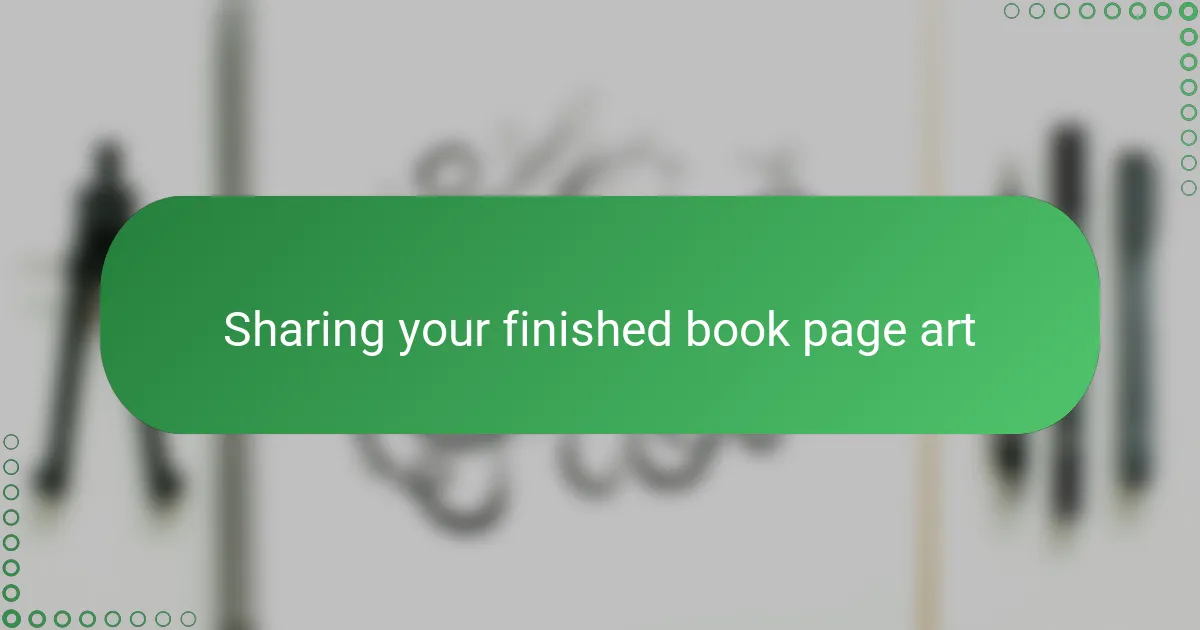Key takeaways
- Handmade paper crafts, especially with old book pages, offer a unique charm and encourage creativity by turning forgotten materials into art.
- Essential techniques include decoupage, folding, and tearing pages, which add character and texture to the final pieces.
- Preservation is crucial; keep artwork away from sunlight, frame it, and maintain humidity for longevity.
- Sharing completed projects can foster community connection and offer heartfelt moments through gifting to others.

Introduction to handmade paper crafts
Handmade paper crafts have a unique charm that machine-made papers simply can’t replicate. When I first dipped my hands into pulping old paper, the texture and scent instantly connected me to the past, sparking a deep sense of creativity. Have you ever wondered how something as simple as paper can become a blank canvas for imagination and emotion? Exploring handmade paper crafts invites you to slow down and appreciate the subtle beauty in each fiber and fold.

Materials needed for book page crafts
Gathering the right materials is the first step in bringing old book pages back to life. I always start with a stack of worn, yellowed pages—there’s something nostalgic about the feel of those fragile sheets between my fingers. Do you have a favorite book that you’d never read again? Those pages can have a second chance as your art.
Besides the book pages themselves, you’ll need some basic tools like scissors, glue, and a brush. I remember the first time I cut into a book, feeling a mix of excitement and hesitation. But as the pieces took shape, that small act felt like a creative rescue mission—breathing new meaning into forgotten words.
Water plays a surprising role too, especially when you want to soften pages for folding or molding. Wetting the paper just right makes it pliable without tearing, which took me a few tries to master. Have you ever been amazed at how something so fragile can become so strong in the hands of creativity? That balance is what makes book page crafts magical.

Preparing old book pages for crafting
Before diving into crafting, I always take time to gently flatten the old book pages. Sometimes, the pages curl or have stubborn creases from years of sitting in a dusty shelf. I use a clean, dry iron on the lowest setting—and trust me, it’s like giving those pages a fresh start. Have you ever tried smoothing out a wrinkled page and felt a small thrill watching it transform?
Another step I’ve found essential is trimming away any torn or brittle edges. It might seem tedious, but removing damaged bits keeps the final artwork neat and ensures the paper holds up better. Plus, cutting away imperfections feels like letting go of the past’s wear and preparing for something new and beautiful.
Lastly, I soak the pages briefly in clean water to relax the fibers before shaping or layering them. Getting the moisture level just right is tricky; too wet and the paper falls apart, too dry and it’s stubborn to fold. After a few trials, I’ve learned to trust my fingers to feel when the paper says it’s ready. Have you noticed how old paper seems to breathe again when it meets water? That moment always feels like magic to me.

Techniques for transforming book pages
One of my favorite techniques for transforming old book pages is decoupage. Applying a thin layer of glue and layering pages onto surfaces creates a textured, vintage look that feels like giving the paper a new life story. Have you ever been surprised by how a simple brushstroke can turn fragile pages into a sturdy artwork?
Another method I often use is folding and sculpting the softened pages into dimensional shapes. Wetting the paper just enough to make it flexible is crucial—too much water and the page loses itself, too little and it resists. Finding that perfect balance feels like a delicate dance, and when the folds hold, it’s deeply satisfying.
Tearing pages instead of cutting them also adds character, creating raw edges that highlight the page’s age and tell their own story. I remember hesitating before ripping a page, but the result was a texture so organic that it changed the entire piece’s mood. Do you think imperfection can sometimes bring out the truest beauty? I certainly do.

Project ideas using old book pages
Using old book pages for projects opens up so many creative possibilities. I recall making delicate paper flowers where the faded print peeked through each petal, adding a timeless touch that regular craft paper just can’t replicate. Have you ever noticed how the words and letters become part of the design, whispering stories even as they form beautiful shapes?
Collage art is another exciting way to breathe life into those pages. One time, I layered torn pieces to create a dreamy landscape, and the irregular edges gave the scene a textured depth I didn’t expect. It felt like the book’s history was woven right into the imagery—do you think art gets richer when it carries a narrative beneath the surface?
If you enjoy functional decor, try making bookmarks or gift tags by cutting old book pages into shapes and adding a splash of color or a ribbon. It always feels special to gift something that carries a snippet of a story, transforming something old into a personal keepsake. Have you ever received a gift that felt more valuable because of its handmade touch? I find those moments truly unforgettable.

Tips for preserving your paper art
Preserving paper art can feel as delicate as creating it. I’ve learned that keeping your artwork away from direct sunlight is crucial—those little UV rays sneak in and fade the colors and text faster than you’d expect. Have you ever noticed how a favorite book’s cover dulls after a few years in a sunny window? Your paper art faces the same fate if left unprotected.
Another trick I always swear by is framing the piece under glass or using a clear acrylic cover. It not only keeps dust and moisture at bay but also gives the artwork a polished look that makes you proud to display it. I remember the first time I framed a piece—I was amazed at how much more vibrant and alive it felt, almost like it was ready for admiration rather than tucked away.
Humidity control is something I had to learn the hard way. Paper loves a stable environment; too much moisture and it warps or gets moldy, too dry and it becomes brittle. I keep a small humidifier nearby during seasonal changes to protect my creations. Do you keep your craft space climate-controlled? It’s a small step that makes a huge difference in how long your paper art stays beautiful.

Sharing your finished book page art
When I first shared my finished book page art, I was amazed at how much joy it brought—not just to me, but to others who saw it. Have you ever felt that pride that comes with showing something handmade? It’s a special kind of satisfaction, knowing those fragile pages found new life through your creativity.
Posting photos on social media or joining craft groups has opened up wonderful conversations for me. People often ask about my techniques or the stories behind certain pages, turning my solo hobby into a vibrant community experience. Have you tried sharing your work online? The feedback and encouragement can be surprisingly motivating.
Sometimes, I gift my book page art to friends and family, and watching their reactions reminds me why I create in the first place. There’s something heartfelt in giving a piece of art made from words and memories—don’t you think it makes the gesture more meaningful? It’s like passing along a small piece of history wrapped in creativity.
